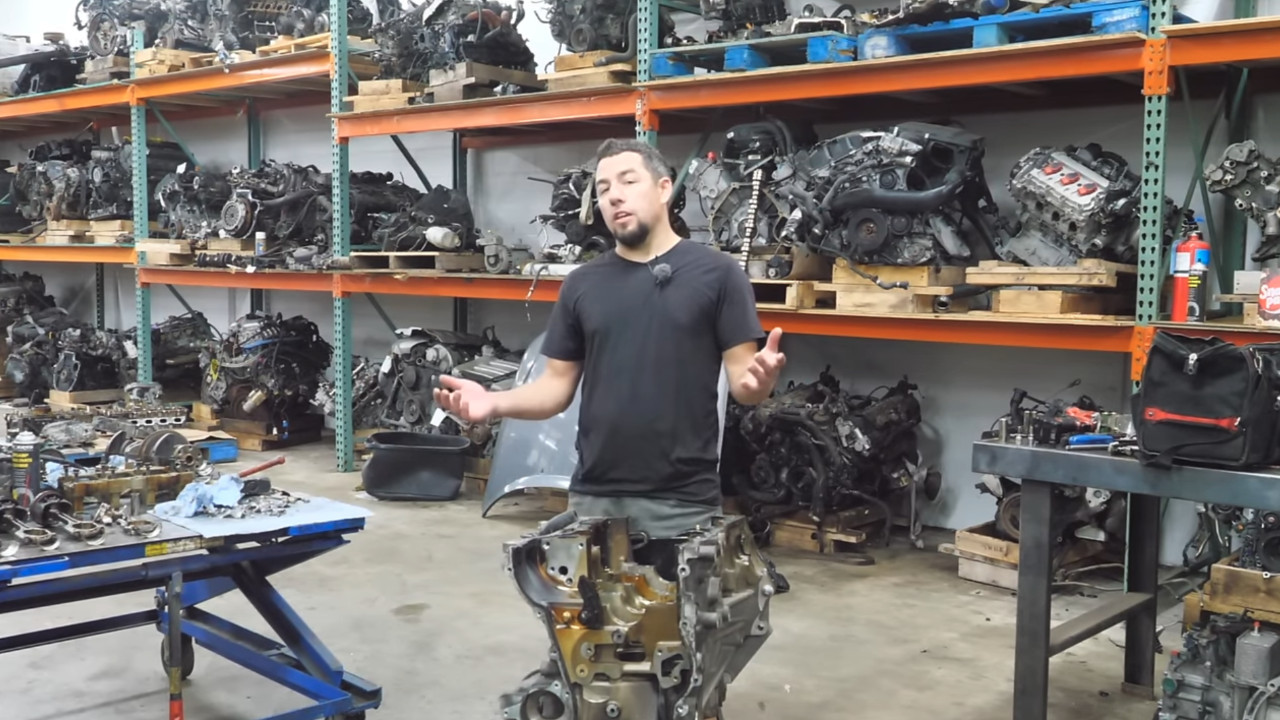YouTube Sleuth Tries To Solve the Mystery of What Destroyed This Ford Engine

If you’re a fan of cars and mysteries, then a video that attempts to unravel what destroyed an engine is right up your alley. Thanks to YouTube, we now have such a video for you.
The engine, in this case, is Ford’s 2.0–liter EcoBoost four–cylinder engine. The automaker has used it to power a wide variety of cars over the years. This particular victim of automotive destruction once powered a 2014 Ford Escape until the day it died.
The Victim’s Background

Eric, the host of the I Do Cars YouTube channel, was fortunate enough to have some background on the deceased engine. At the time of its demise, the 2014 Ford Escape Titanium SUV this engine had powered had racked up 164,000 miles.
According to Eric, “someone’s daughter” drove this car without ever checking the oil. That’s not exactly what we would call responsible car ownership. If someone wants their vehicle to meet a painful end, never checking or changing the oil is a great way to go.
The Investigation Begins

Eric, being the philosophical automotive detective that he is, asked what the engine’s “good side” was. His deadpan delivery underscored the engine’s condition. Is the dented and cracked side of the destroyed engine better than the side with a gaping hole in it?
In terms of mechanical carnage, we say that the side that looks like a Xenomorph from the Alien franchise exploded out of it is the clear winner. However, Eric points out that there is actually further damage at the back of the engine, so its “good side,” meaning the one that offers up the most forensic clues as to how this engine met its fate, is a loaded question.
Those holes at the back of the engine give the impression that something exploded. In other words, this internal combustion engine produced the wrong type of combustion.
Clues

We’d love for this automotive whatdunit to turn into a mind–bending cross–genre mystery. Is an Alien versus Transformers mashup too much to ask for? Anyway, Eric found a vital clue when he removed the engine’s cylinder head.
Three of the cylinders contained substantial amounts of water, while one of the pistons was missing entirely. The plot thickens: What happened to the missing piston? As is often the case in these mechanical autopsies, Eric discovered vital clues in the oil pan.
An Obliterated Piston

Eric found the piston, or at least what was left of it, in the engine’s oil pan. We’ll spare you the gory details and just say that the piston remnants looked like the victim of a drive–by shooting with a Tommy gun in a 1930s gangster movie.
Some of the piston’s components were so unrecognizable that Eric could not make heads or tails of what part went where when he tried to piece them back together. It was a grisly turn in the case, to be sure. But what was the culprit behind all this devastation?
The Detective’s Hypothesis

The piston exploding obviously killed the engine. But what destroyed the piston? At the conclusion of the autopsy, Eric surmised that sometime after “someone’s daughter” neglected to check the car’s oil, the vehicle “sat outside for some time,” hence why he found water in various parts of the engine.
Although “someone’s daughter” did not check the car’s oil before it died, Eric did not believe that oil starvation was the culprit. He cited a lack of evidence as his reason for not pursuing that theory. What Eric does believe happened is that the car’s owner continued to drive it after the engine had already exploded until the engine seized up.
That still leaves the question of what caused the engine to explode unanswered. Unfortunately, Eric notes that because the car was left outside after it broke down, there is not sufficient evidence for him to determine the exact cause of its demise.
It’s a cold case in the end. Another chilling chapter in the history of automotive mayhem. Is there any takeaway, any moral we can abstract from this sad story? Well, we will just say this: regardless of whether oil starvation played any role in this engine’s demise, always make sure to check your oil.





